Italiano
Villa d’Este a Tivoli (Roma)
Salve a tutta la community, quest'oggi voglio condividere una bellissima visita che abbiamo fatto io e mia moglie a Tivoli, all'interno della Villa d'Este, famosa per le sue fontane e giardino.
Un pizzico di cenni storici
Dichiarata nel 2001 Patrimonio dell’Umanità UNESCO, rappresenta un capolavoro del giardino italiano con l’impressionante concentrazione di fontane, ninfei, grotte, giochi d’acqua e musiche idrauliche.
Il cardinale Ippolito II d’Este, dopo le delusioni per la mancata elezione pontificia, fece rivivere qui i fasti delle corti di Ferrara, Roma e Fointanebleau e rinascere la magnificenza di Villa Adriana.
Governatore di Tivoli dal 1550, accarezzò subito l’idea di realizzare un giardino nel pendio della Valle gaudente, ma soltanto dopo il 1560 si chiarì il programma architettonico e iconologico della Villa, ideato dal pittore-archeologo-architetto Pirro Ligorio e realizzato dall’architetto di corte Alberto Galvani. Il palazzo fu decorato dai protagonisti del tardo manierismo romano.
La Villa era quasi completata alla morte di Ippolito d’Este nel 1572. Ad ulteriori interventi nel XVII secolo seguì un periodo di decadenza, finché il cardinale Gustav Adolf von Hohenlohe ne rinverdì i fasti ospitando anche il musicista Ferenc Liszt (1811-1886). Acquisita dallo Stato italiano, fra gli anni Venti e Trenta del Novecento la Villa fu restaurata e aperta al pubblico.

English
Villa d’Este in Tivoli (Rome)
Hello to the whole community, today I want to share a beautiful visit that my wife and I made in Tivoli, inside the Villa d'Este, famous for its fountains and garden.
A little bit of historical background
Declared a World Heritage Site by UNESCO in 2001, the villa grounds include a masterpiece of Italian garden design with an amazing concentration of fountains, nymphaea, grottoes, water themes and a organ which produces audible effects created by water.This is the place where, disillusioned at not having been elected as Pope, Cardinal Ippolito II d’Este revived the splendour of the courts of Ferrara, Rome and Fointanebleau, and brought the magnificence of Villa Adriana back to life. Governor of Tivoli from the year 1550, he soon toyed with the idea of creating a garden on the slope of the Valle gaudente, but it was only after 1560 that the architectural and iconological aspects of the Villa, designed by painter-archaeologist-architect Pirro Ligorio and built by court architect Alberto Galvani, became clear. The palace was decorated by the protagonists of late Roman Mannerism.The Villa had almost been completed by the time Ippolito d’Este died in 1572. Further work in the 17th century was followed by a period of decline, until Cardinal Gustav Adolf von Hohenlohe refurbished the old grandeur and even hosted musician Ferenc Liszt (1811-1886). Purchased by the Italian government between the Twenties and Thirties of the last century, the Villa was renovated and opened to the public.

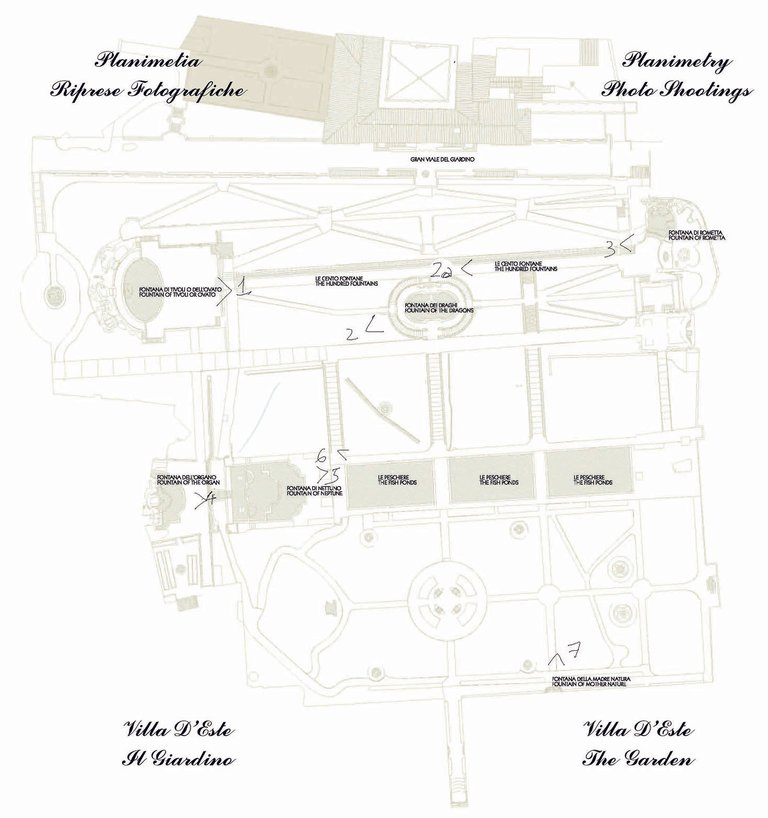

Panoramica
Overview

Iniziamo la nostra visita assieme ...
Let's start our trip together ...

01 - FONTANA DI TIVOLI O DELL'OVATO
01 - FOUNTAIN OF TIVOLI OR OVATO
| Italiano | English | ||||||||||||||||||||||||
|---|---|---|---|---|---|---|---|---|---|---|---|---|---|---|---|---|---|---|---|---|---|---|---|---|---|
| Un’opera che raffigura Tivoli.
Il nome di ‘Fontana dell’Ovato’ le deriva dalla sua forma e risale alla sua creazione, nel 1567. Le statue presenti raffigurano eroi della mitologia e simbolicamente rappresenta proprio la cascata di Tivoli, mentre le rocce situate nella parte alta della fontana rappresentano i monti tiburtini. | A work that depicts Tivoli.
The name of 'Fontana dell'Ovato' derives from its shape and dates back to its creation in 1567. The statues present depict heroes of mythology and symbolically represent the Tivoli waterfall, while the rocks located in the upper part of the fountain represent the Tiburtini mountains. 
|
| Italiano | English | ||||||||||||||||||||
|---|---|---|---|---|---|---|---|---|---|---|---|---|---|---|---|---|---|---|---|---|---|
| La Fontana dei Draghi o della Girandola.
Una leggenda narra che la fontana venne costruita in una sola notte nel settembre del 1572. | The Fountain of the Dragons or the Pinwheel.
A legend tells that the fountain was built in a single night in September 1572.In reality it was Pirro Ligorio who conceived and built it. The fountain is enclosed by two semicircular ramps that join above it, ending on the terrace with a balustrade with columns (avenue of the hundred fountains). At the center of the Fountain there are 4 monstrous Dragons and a powerful gush that makes the vision suggestive, fairytale and gloomy at the same time. |
| Italiano | English | ||||||||||||||||
|---|---|---|---|---|---|---|---|---|---|---|---|---|---|---|---|---|---|
| A mio parere la Fontana della Rometta è la più bella dell'intera villa d'Este.
Pirro Ligorio aveva immaginato una complessa allegoria con l'acqua che sgorga dai monti Tiburtini (Fontana dell'Ovato) e che scorrendo lungo il fiume Aniene (il Viale delle Cento fontane), arrivava fino a Roma ovvero fino alla Fontana della Rometta.
Ma partiamo dal motivo perchè la Fontana è chiamata della Rometta. Quando Papa Pio V gli impedì di realizzare un proprio castello a Roma che doveva competere con il Vaticano stesso, Ippolito II decise che Villa d'Este sarebbe stato il suo castello e che allora avrebbe portato Roma a Tivoli ... Nel 1850, causa di uno smottamento del terreno, venne abbattuta tutta la parte sinistra e centrale della grande scultura rappresentante i sette colli di Roma ed in pratica oggi vediamo solo la parte "destra" dello sfondo originario. Osservate come la statua della Roma Vittoriosa si contrapponga alla statua della Sibilla Tiburtina posta sopra la Fontana dell'Ovato. Le sue statue è come se si guardassero ... separate dal Viale delle Cento Fontane. | In my opinion, the Rometta Fountain is the most beautiful of the entire Villa d'Este. Pirro Ligorio had imagined a complex allegory with the water that flows from the Tiburtini mountains (Fontana dell'Ovato) and that flowing along the Aniene river (the Viale delle Cento fontane), reached as far as Rome or as far as the Rometta Fountain.
But let's start with the reason why the fountain is called della Rometta. When Pope Pius V prevented him from building his own castle in Rome that had to compete with the Vatican itself, Ippolito II decided that Villa d'Este would be his castle and that he would then bring Rome to Tivoli ... In 1850, due to a landslide, the entire left and central part of the large sculpture representing the seven hills of Rome was demolished and in practice today we only see the "right" part of the original background. And to express his Romanity, here he had the statue of Rome Victorious and obviously a she-wolf with Romulus and Remus. Observe how the statue of the Victorious Rome contrasts with the statue of the Sibilla Tiburtina placed above the Fontana dell'Ovato. Its statues are as if they were looking at each other ... separated by the Viale delle Cento Fontane. |
| Italiano | English | ||||||||||||
|---|---|---|---|---|---|---|---|---|---|---|---|---|---|
| Una delle fontane più conosciute e belle di tutta Villa d’Este, la Fontana dell’organo deve il suo nome all’ingegnoso meccanismo idraulico celato al suo interno, il cui scopo era quello di produrre sonorità simili a quello dell’organo.
Questo capolavoro di ingegneria e di arte barocca, fu realizzato tra il 1568 e il 1611, al tempo del Cardinale Alessandro d’Este. Tutto il complesso fu progettato da Pirro Ligorio, la cui facciata è ornata da una serie di decorazioni ispirate a motivi floreali, sirene, simboli araldici, vittorie alate e conchiglie marine. Ai lati della grande nicchia centrale sono presenti quattro colossali telamoni, opera di Pirrin del Gagliardo. Nella nicchia centrale era previsto l’inserimento della Statua della Fortuna ma questa fu in seguito spostata nelle mura della parte meridionale della villa. Fu il Cardinale Alessandro che, al posto della nicchia, fece costruire una sorta di altare per proteggere il sistema idraulico della Fontana dell’Organo. Le due nicchie laterali oggi ospitano le statue di Apollo e Orfeo; quest’ultima prese il posto di un’altra che raffigurava Diana. Altro particolare della fontana è lo stile barocco che la contraddistingue, ben diverso da quello rinascimentale che permea l’intera Villa d’Este. | One of the best known and most beautiful fountains in the whole of Villa d'Este, the Organ Fountain owes its name to the ingenious hydraulic mechanism hidden inside, whose purpose was to produce sounds similar to that of the organ.
This masterpiece of engineering and Baroque art was built between 1568 and 1611, at the time of Cardinal Alessandro d’Este.
The whole complex was designed by Pirro Ligorio, whose facade is adorned with a series of decorations inspired by floral motifs, mermaids, heraldic symbols, winged victories and sea shells. On the sides of the large central niche there are four colossal telamons, the work of Pirrin del Gagliardo. In the central niche it was foreseen the insertion of the Statue of Fortune but this was later moved to the walls of the southern part of the villa. It was Cardinal Alessandro who, in place of the niche, had a sort of altar built to protect the hydraulic system of the Organ Fountain. The two side niches now house the statues of Apollo and Orpheus; the latter took the place of another that depicted Diana. Another detail of the fountain is the Baroque style that distinguishes it, very different from the Renaissance one that permeates the entire Villa d’Este. |
| Italiano | English | ||||||||
|---|---|---|---|---|---|---|---|---|---|
| Sotto la balconata che delimita la Fontana dell’Organo, al centro di una serie di terrazzamenti, scorre una cascata d’acqua che va a ricadere sopra una nicchia all’interno della quale è inserito il torso di una statua di Nettuno.
Da altre vasche di forma circolare e a più livelli sgorga altra acqua in numerosi zampilli. La fontana di Nettuno fu costruita nel 1927 e prese il nome di Fontana di Nettuno in quanto venne riutilizzato e collocato al centro della nicchia di fondo il torso di una statua non finita risalente al XVI secolo. | Under the balcony that borders the Fountain of the Organ, in the center of a series of terraces, a cascade of water flows which falls over a niche inside which the torso of a statue of Neptune is inserted.
From other circular and multi-level tanks, more water gushes out in numerous jets. The fountain of Neptune was built in 1927 and took the name of Fountain of Neptune as the torso of an unfinished statue dating back to the sixteenth century was reused and placed in the center of the niche at the bottom. |
| Italiano | English | ||||
|---|---|---|---|---|---|
| Le Peschiere sono tre ampie vasche rettangolari disposte in successione al centro del giardino.
Rappresentano un continuum prospettico della Fontana del Nettuno, da cui vengono alimentate.
Circondate da una lussureggiante vegetazione, sono arricchite da vasi collocati su tutti i bordi e da otto zampilli per vasca.Queste sono regolate in modo tale da distribuire un flusso e un’increspatura decrescente, dalla vasca più interna verso quella più vicina alla terrazza.Il progetto iniziale prevedeva di collocare una statua del Dio del Mare sulla terrazza, a completare la scenografica composizione artistica iniziata dalla Fontana del Nettuno.
In passato era un luogo di delizie e di passatempo. Le vasche servivano anche a permettere l’introduzione di pregiate specie ittiche che venivano pescate da tutti coloro che soggiornavano nella villa.Il pesce veniva cucinato e degustato dagli ospiti. Inoltre erano predisposti dei lussuosi chioschi dove poter riposare dopo le passeggiate. Dalle Peschiere si può ammirare uno degli angoli più belli e spettacolari di tutta Villa d’Este. | The Peschiere are three large rectangular pools arranged in succession in the center of the garden.
They represent a perspective continuum of the Fountain of Neptune, from which they are fed.
Surrounded by luxuriant vegetation, they are enriched by vases placed on all edges and by eight jets per tank.These are regulated in such a way as to distribute a decreasing flow and ripple, from the innermost pool to the one closest to the terrace.The initial project involved placing a statue of the God of the Sea on the terrace, to complete the scenographic artistic composition begun by the Fountain of Neptune.
In the past it was a place of delight and pastime. The tanks also served to allow the introduction of valuable fish species that were fished by all those who stayed in the villa.The fish was cooked and tasted by the guests. In addition, luxurious kiosks were set up where you can rest after your walks. From the Peschiere you can admire one of the most beautiful and spectacular corners of the whole Villa d’Este. |
| Italiano | English |
|---|---|
| Fu commissionata da Ippolito II allo scultore fiammingo Gillis Van den Vliete che si ispirò alla famosa Diana di Efeso.
La fontana è stata realizzata usando un particolare materiale calcareo chiamato tartaro tiburtino.
Si notano le molte mammelle, volte a simboleggiare la fecondità della natura.
In origine la statua si trovava nella nicchia dell’attuale Fontana dell’Organo ma Alessandro d’Este nel 1611 la fece spostare in un luogo più appartato per non dare nell’occhio. | It was commissioned by Hippolytus II to the Flemish sculptor Gillis Van den Vliete who was inspired by the famous Diana of Ephesus.
The fountain was made using a particular limestone material called Tiburtine tartar. The many breasts are noted, designed to symbolize the fecundity of nature.
Originally the statue was in the niche of the current Fountain of the Organ but Alessandro d’Este in 1611 had it moved to a more secluded place so as not to attract attention.The reason was not to go against the severe laws of the Counter-Reformation, which condemned the works with subjects typical of the pagan cult. |

Grazie per avermi/ci ( c'era anche mia moglie col cane ) seguito in questa visita, spero vi sia piaciuta e che abbiate trovato il tutto interessante. Se è così lasciate un voto positivo e un commento. Grazie.
Thank you for having followed us (my wife with the dog was there too) on this visit, I hope you enjoyed it and that you found everything interesting. If so please upvote me and leave a comment. Thx
All images were taken by me, therefore are my property but you can use them
if you need , except ones with my wife on, thx ^^


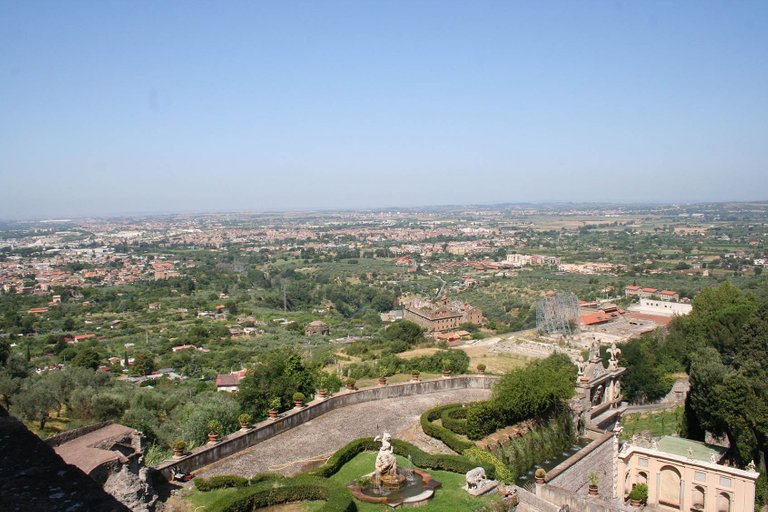
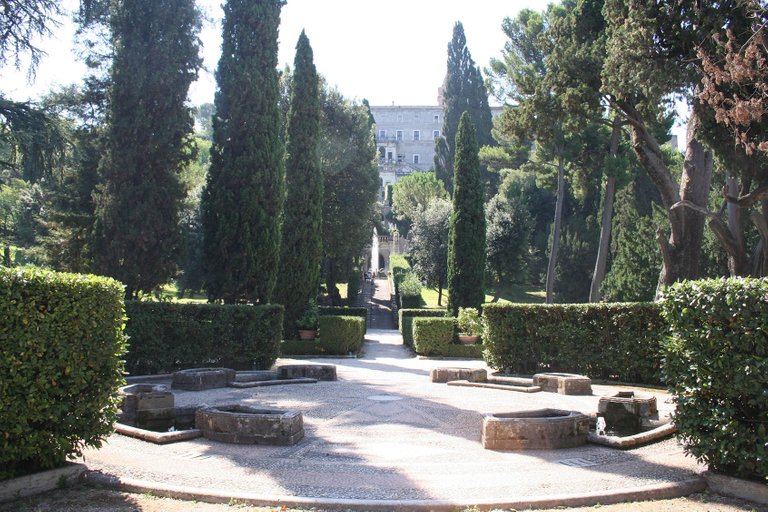
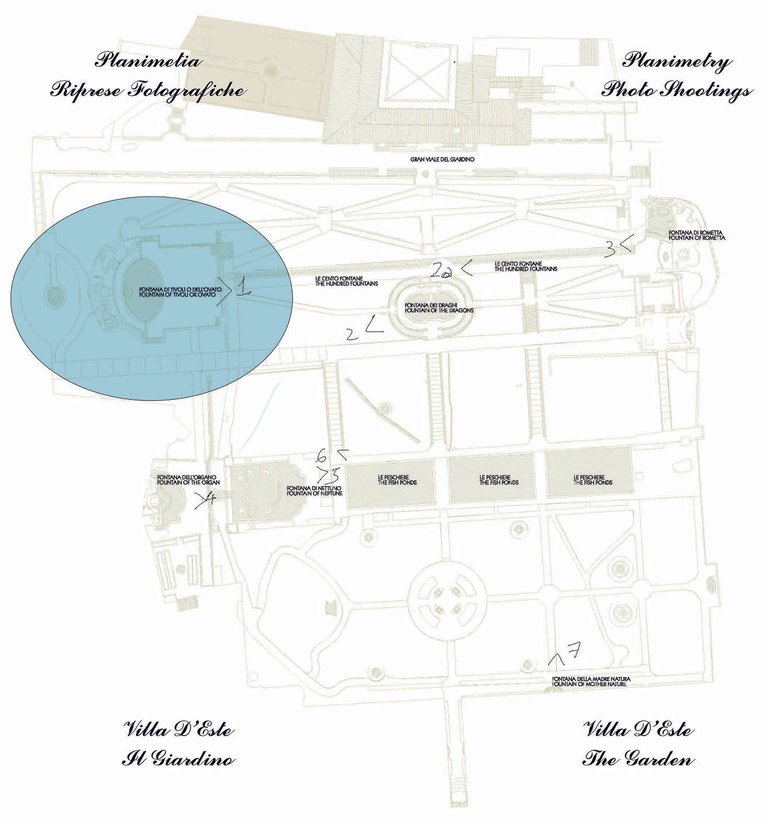
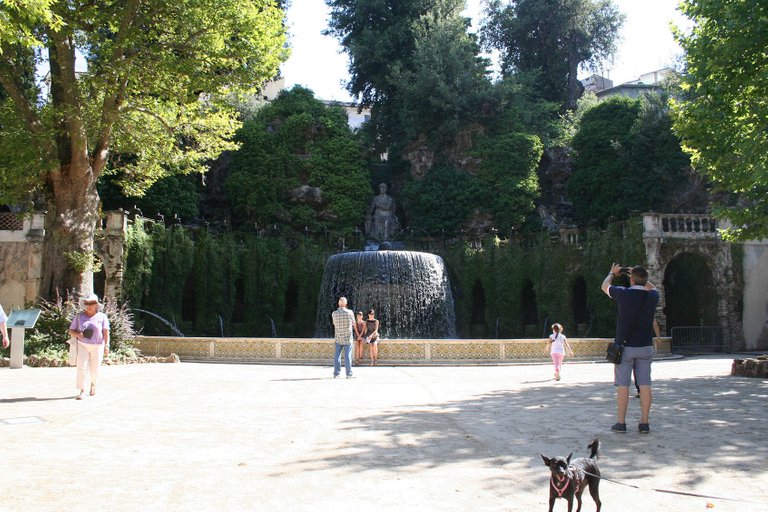
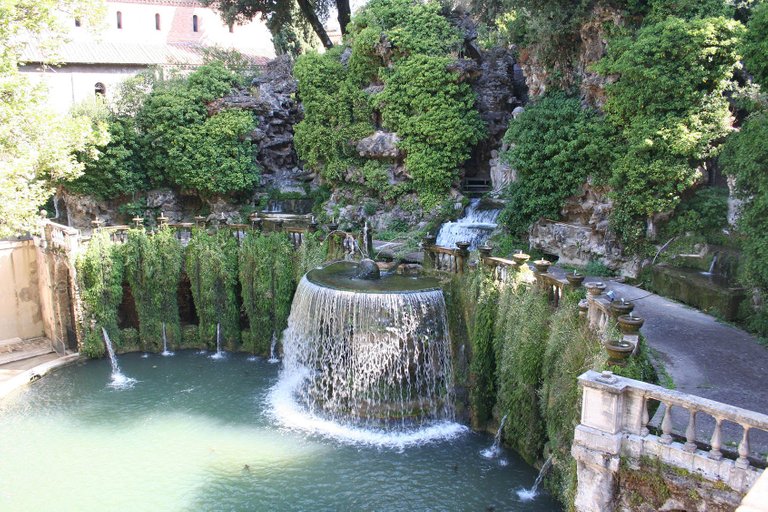
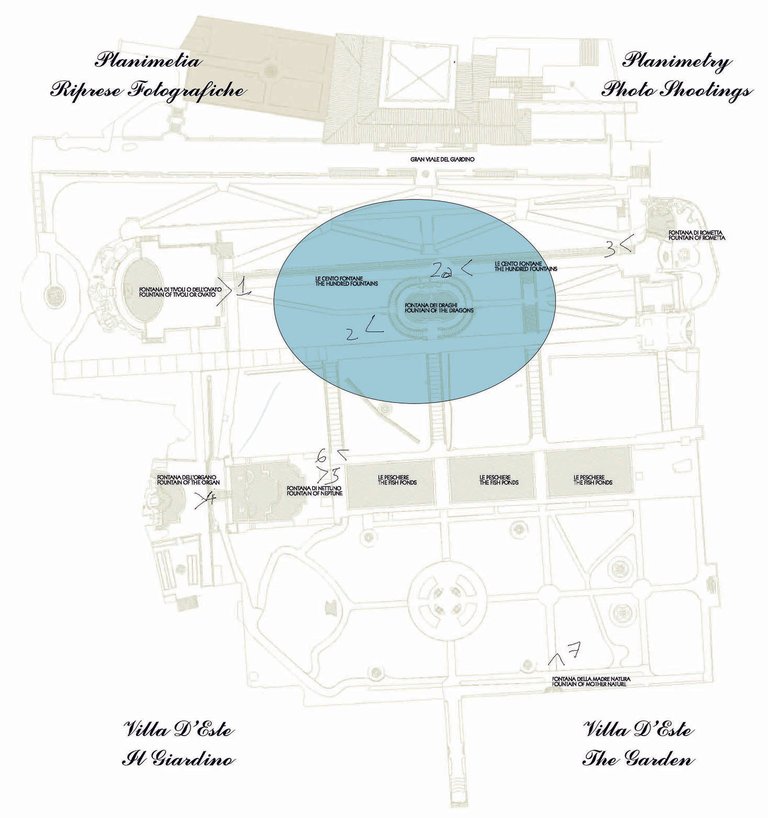
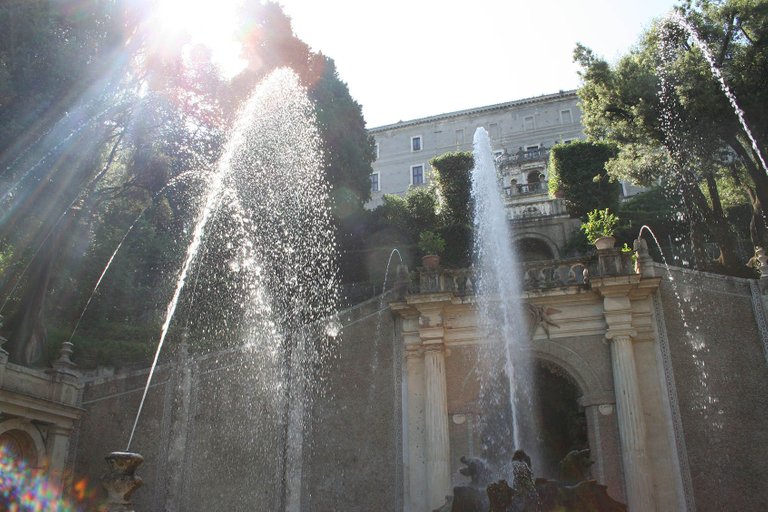
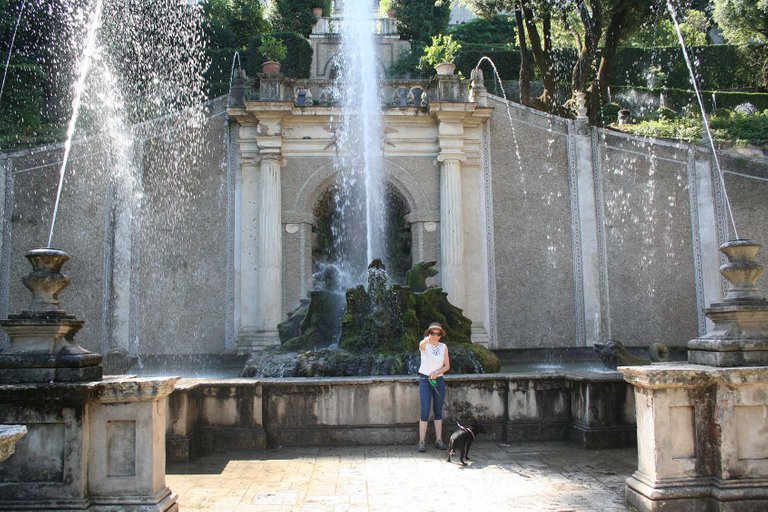
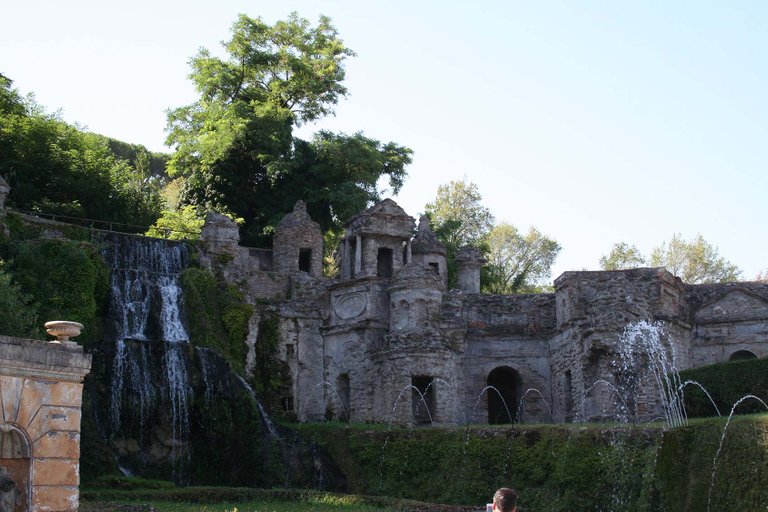
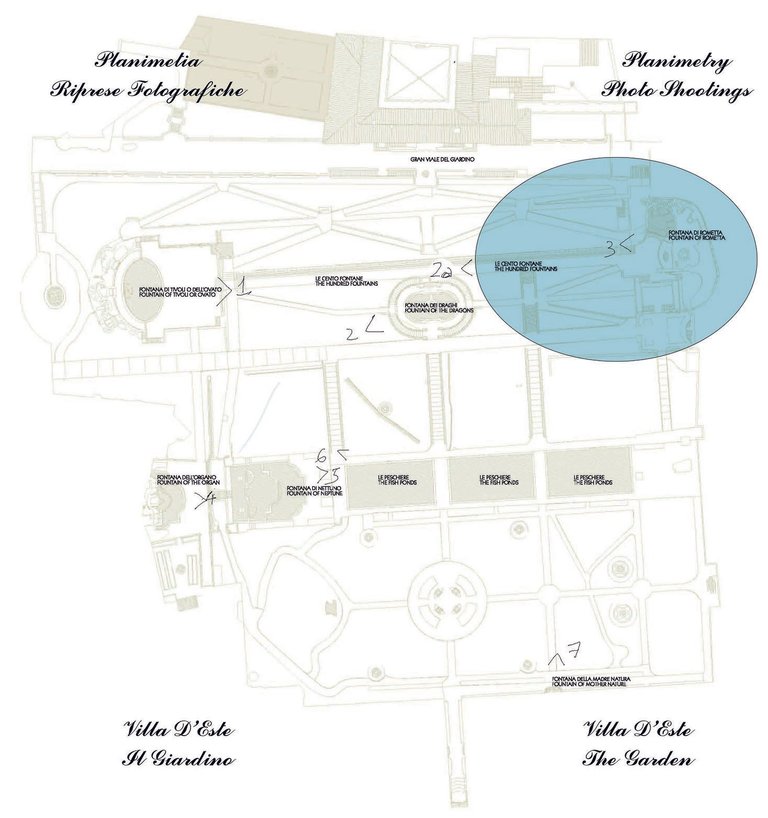
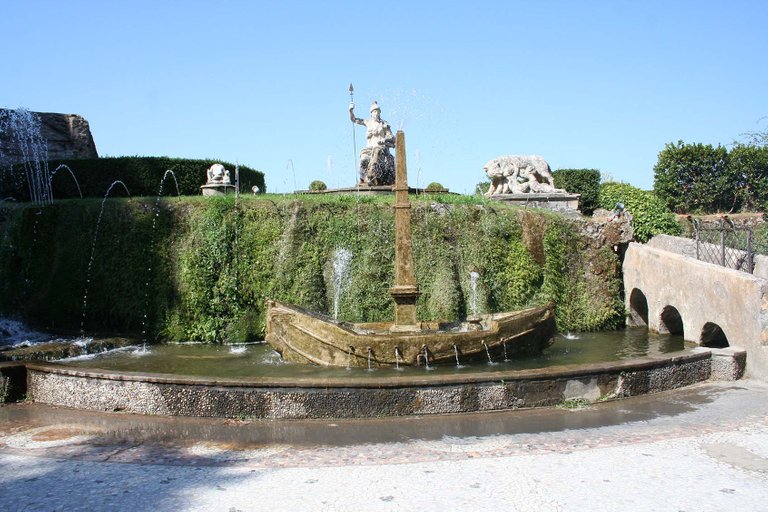
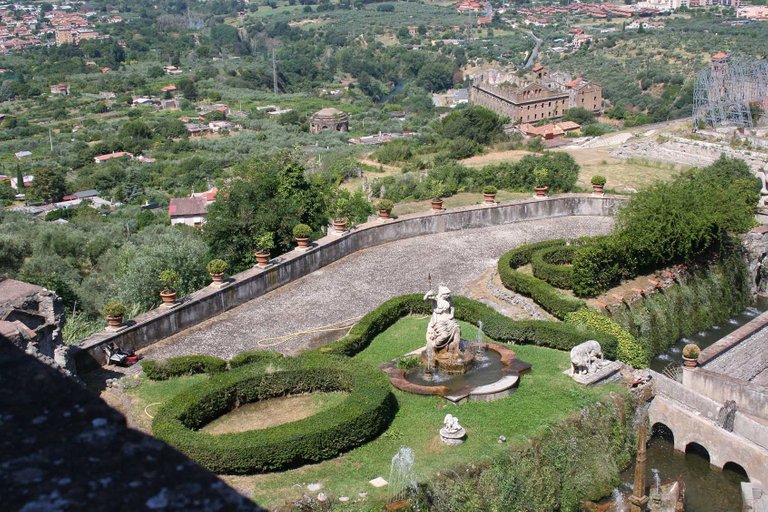
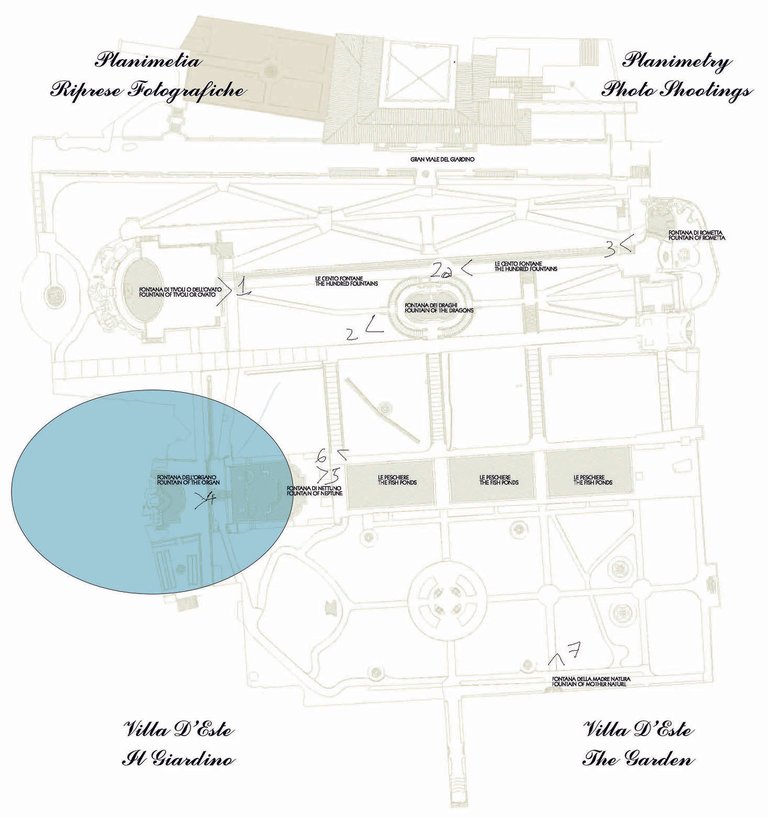
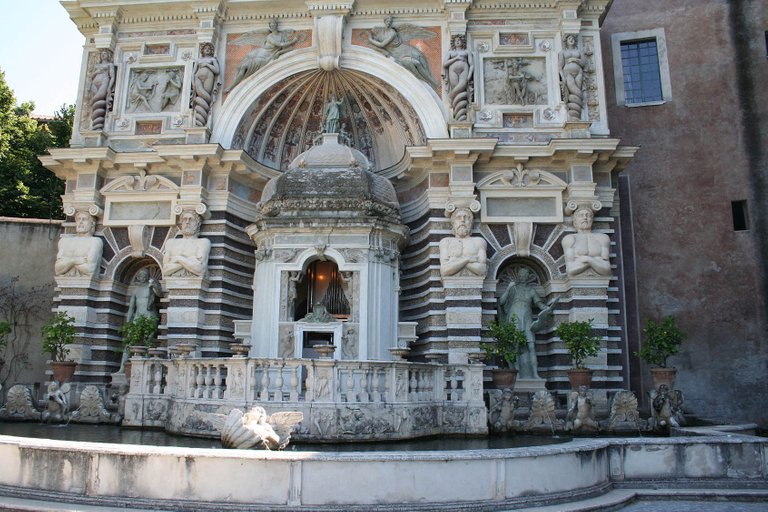
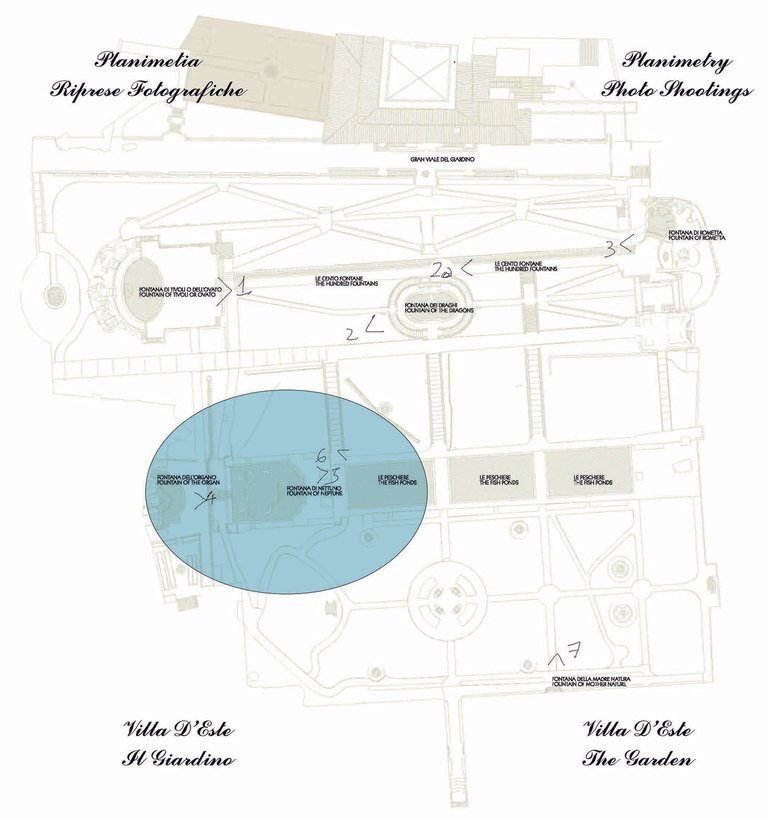
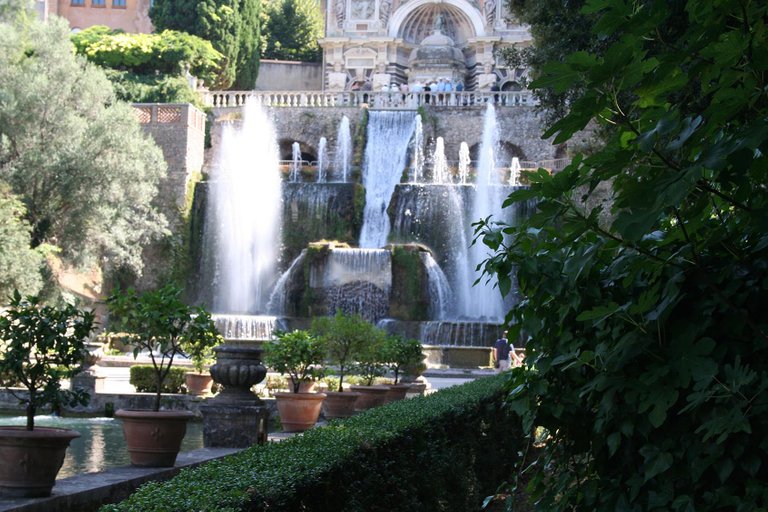
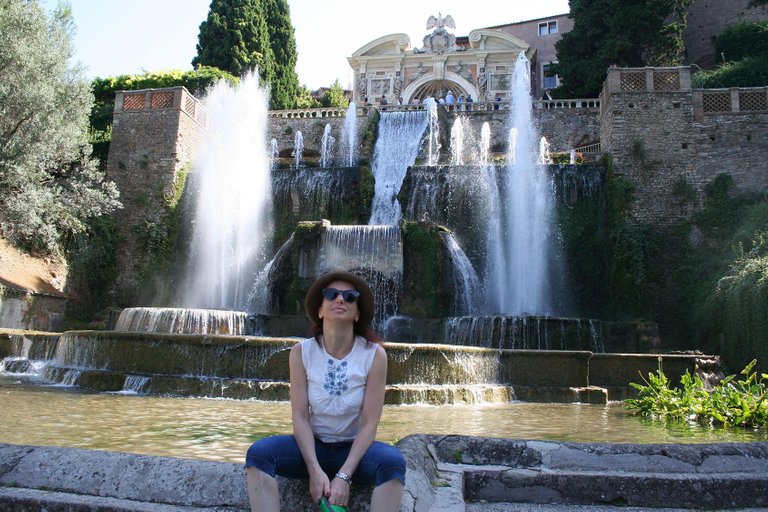


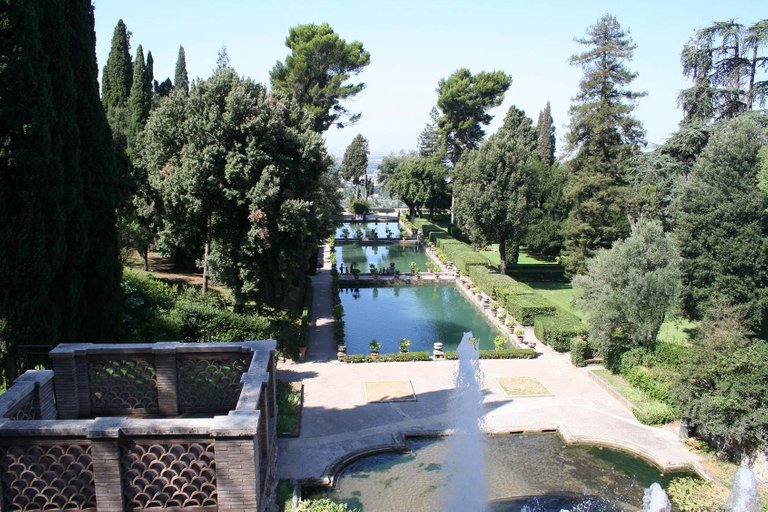
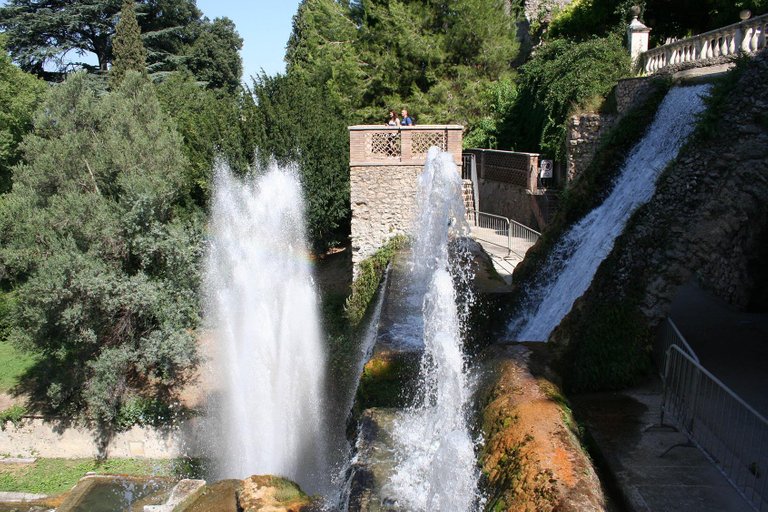
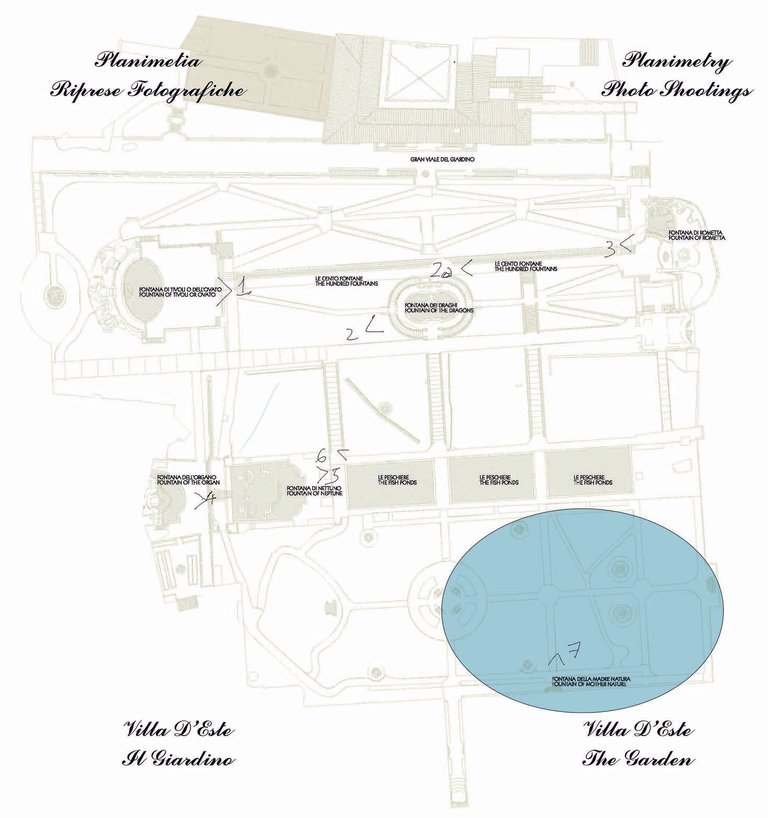
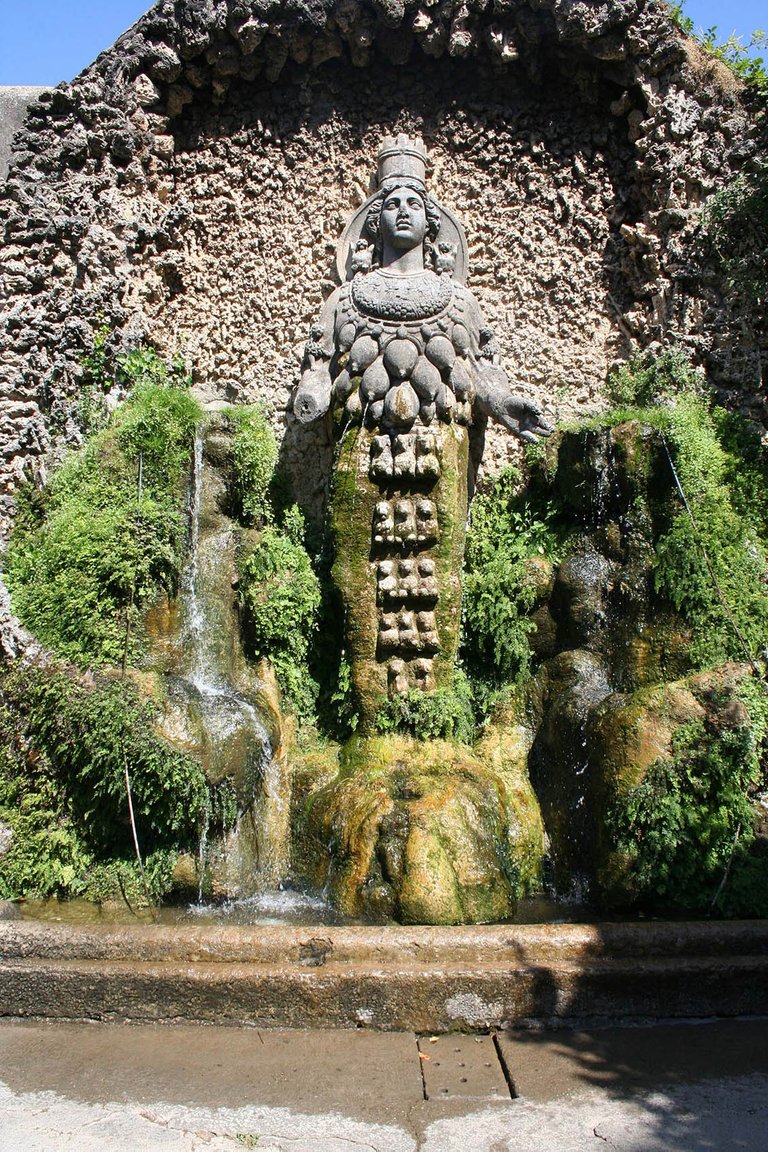
Source of potential plagiarism 1
Source of potential plagiarism 2
Source of potential plagiarism 3
Source of potential plagiarism 4
Source of potential plagiarism 5
Source of potential plagiarism 6
Plagiarism is the copying & pasting of others' work without giving credit to the original author or artist. Plagiarized posts are considered fraud.
Guide: Why and How People Abuse and Plagiarise
Fraud is discouraged by the community and may result in the account being Blacklisted.
If you believe this comment is in error, please contact us in #appeals in Discord.
In this post you have managed to take my mind to these amazing places.
I really appreciate it, That is the reason why I shared and published it.

Hello,
It has come to our attention that there is some issues with table formatting within post. Could you elaborate how you formatted or pasted tables? Was it from peakd toolbars or used some external editor to make tables? Thank you.
I used external editor , what kind of problem was ?
Some table html tags are not closed properly caused issues on rendering. Websites/browsers are forgiving that error and trying to render properly but Ecency mobile app is not much so, it is rendering your post incorrectly.
ok, thx to let me know
Congratulations, your post has been added to Pinmapple! 🎉🥳🍍
Did you know you have your own profile map?
And every post has their own map too!
Want to have your post on the map too?
@tipu curate
Upvoted 👌 (Mana: 67/87) Liquid rewards.
Please stop rewarding fraud.
Noted.
Thanks.
Congratulations @archimax72! You have completed the following achievement on the Hive blockchain and have been rewarded with new badge(s):
Your next target is to reach 1500 upvotes.
You can view your badges on your board and compare yourself to others in the Ranking
If you no longer want to receive notifications, reply to this comment with the word
STOPCheck out the last post from @hivebuzz:
Support the HiveBuzz project. Vote for our proposal!
Thank you for sharing this amazing post on HIVE!
non-profit curation initiative!Your content got selected by our fellow curator @ashikstd & you just received a little thank you via an upvote from our
You will be featured in one of our recurring curation compilations and on our pinterest boards! Both are aiming to offer you a stage to widen your audience within and outside of the DIY scene of hive.
Join the official DIYHub community on HIVE and show us more of your amazing work and feel free to connect with us and other DIYers via our discord server: https://discord.gg/mY5uCfQ !
If you want to support our goal to motivate other DIY/art/music/homesteading/... creators just delegate to us and earn 100% of your curation rewards!
Stay creative & hive on!